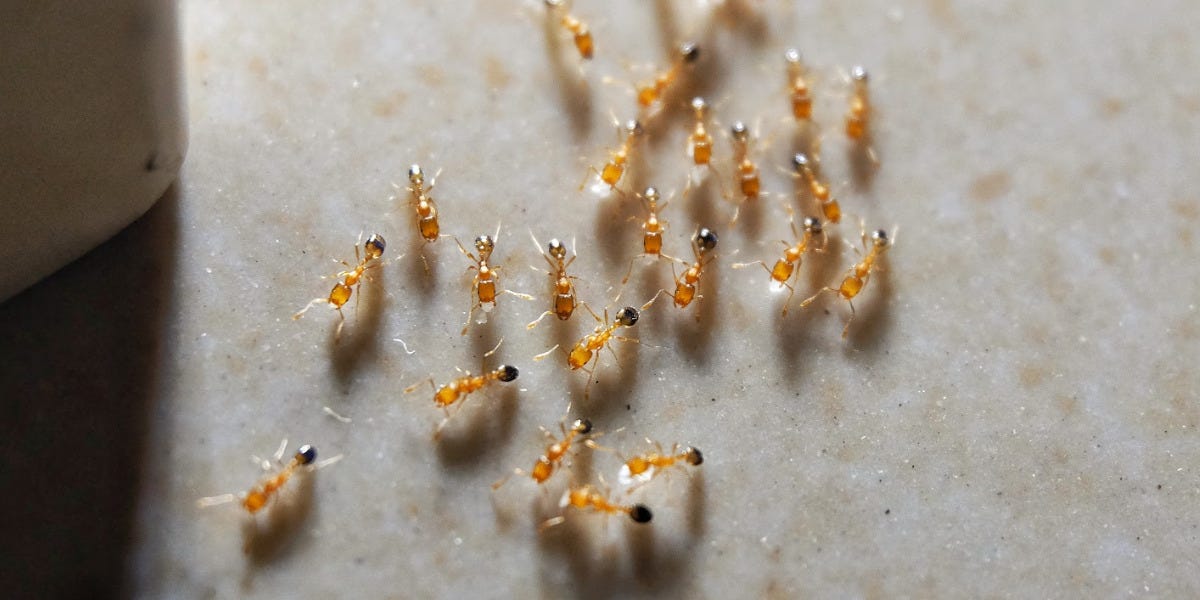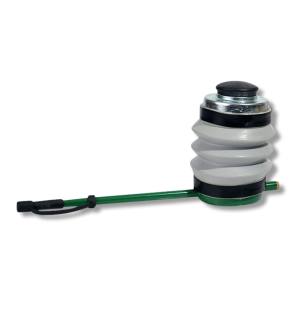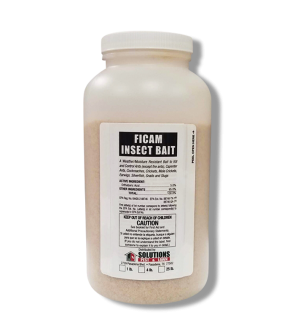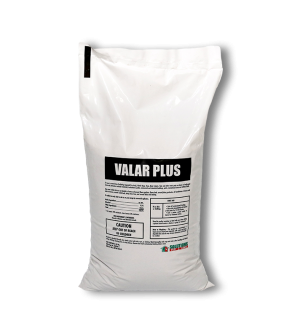Thief Ant Control
Most Effective Products
Thief Ant Control: How to Get Rid of Thief Ants
This page is a thief ant control guide. By using the products and methods suggested you will get control of thief ants. Follow this guide and use the recommended products and we guarantee 100% control of thief ants.
One of the most prevalent household pests throughout the United States is the thief ant. These ants are among the smallest household ants, but despite their small size they can quickly become major irritations. They earn their nickname from their ability to invade other ant species nests and stealing food and sometimes other ant offspring.
Although they are known by their common nickname, they are also referred to as grease ants. The workers of this ant species often invade homes to seek out food sources, particularly meat, bread, dairy, protein, greasy type foods, and sometimes sweets. Their small size allows them to easily travel inside stored food products like packaged bread and other types of contained goods in pantries and kitchen cupboards. These ants can also feed on dead and decaying animals and other insects, which can spread harmful pathogens to the food you eat.
When thief ants make themselves at home in other ant colonies nests or within the structure of your home it can be difficult to remove them. However, it is not impossible to control thief ant populations when action is immediately taken at the first sign of pest activity. Read on to learn how to prevent and get rid of thief ants within and outside of your home by following the steps and products recommended throughout this DIY guide.
Identification

Before you can proceed with treatment, you will need to be sure the ant infestation is in fact the thief ant. Careless identification can lead you to using the wrong treatment methods, costing you time and money. Here are some common characteristics of thief ants for quick and easy identification.
- Pale yellow to bronze or dark brown coloration with a smooth and shiny appearance.
- Have two-node in the petiole, a 10 segmented antennae, two large segmented club, and six legs. Often this pest is confused with the pharaoh ant with the exception they have a 12 segmented antennae and a three segmented club.
- Measure very small at about 1/16 of an inch.
- Oblong shaped abdomen with a small visible stinger, rarely every used.
- Small compound eyes that are not easy to see to the bare human eye.
Use the image and description above to help you properly identify thief ants on your property. If unsure, then you can email, call, or stop by one of our store locations where we can better assist you with proper identification. You may bring a sample of the pest as long as it's in a sealable plastic container.
Inspection

Once you have confirmed thief ants on your property, you can proceed with inspection. During the inspection, you are determining areas to pinpoint your pesticide application and the conditions allowing the pest to thrive.
Where to Inspect
Thief ants are commonly found around kitchen sinks, on top of counters, small crevices and cracks, behind baseboards, in woodwork and masonry, within walls, and around drains and where plumbing meets the wall where greasy oil and moisture build-up, and in the cupboards and pantries of kitchens within homes.
Outdoors they will invade other ant nests and hide in bare soil or rotten or hollowed wood of fallen logs, stumps, and tree cavities, and especially underneath stones and rocks.
What to Look For
Nests of thief ants are hard to find since they hide within walls, wood, underneath stones, and other ant nests. They do create a network of small tunnels to connect to other ant nests they are invading. To find their nests you will need to follow the trail of foraging workers traveling back from the food source. Typically, thief ants forage during the afternoon, but they can go throughout the day and night if the weather is warm enough.
Besides ant trails, the pest itself could be present within packaged food items from bread, cheese, peanut butter, nuts, and protein or meat type foods. If these pests cannot escape then they will curl into a ball shape when perished.
Treatment
When conducting any pest control plan you will need to wear the appropriate personal protective equipment (PPE) such as gloves, mask, safety googles or glasses, long-sleeve shirt, long-sleeve pants, coveralls, and closed-toe shoes with socks.
To control thief ant populations it would be best to begin applications from June to September since this is the period swarmer's take flight and spread to other parts of your property to breed and start new colonies. Each egg takes up to 50 days to develop into breeding adults, so for this reason, we recommend using baits within your home and long-lasting insecticides on the outside of your home.
We recommend baiting inside of your home as dusting or residual sprays can cause thief ant colonies to split into smaller groups and further spread within walls, insulation, and voids.
Step 1: Broadcast Valar Plus Bifenthrin Granules Across Yard

Thief ants can hide in the smallest of openings in the soil and within wooden surfaces. Not to mention they can evade above ground applications by traveling to other ant nests through various small connecting tunnels. However, this can only be done in the ground so other areas they are infesting will require them to travel above ground. For this, we recommend applying a broad-spectrum and long lasting insecticide application with Valar Plus Bifenthrin Granules.
Valar Plus Bifenthrin Granules is a granular insecticide that is labeled to treat a broad-spectrum of ants and other pests for up to 3 months. Effectively treating any ants not present at the time of application on your homes lawn.
Determine how much Valar Plus Bifenthrin Granules to use by calculating the square footage of your treatment area. Find this by measuring the length and width of the treatment site in feet then multiply them together (length X width = square footage). For acreage applications, take the square footage and divide it by one acre (square footage / 43,560 sq. ft. = acreage).
Apply 2.3 to 4.6 lbs. of Valar Plus Bifenthrin Granules per 1,000 sq. ft. of turfgrass or 100 to 200 lbs. of product per acre.
To cover your entire treatment area with Valar Plus Bifenthrin Granules you will need to apply it with a push spreader. To treat smaller areas you can use a handheld spreader. Start from the corner of your treatment area and make your way to the front in straight, parallel lines at a steady pace. Then walk back and forth across the treatment area to cover the space in the middle.
Once your done making your application, water the product in with a liquid insecticide like Supreme IT to activate the granules. The combination of both of these products will help to provide a stronger and more effective residual against thief ants as well as treat your homes perimeter and outdoor entry points.
Step 2: Spray Outside with Supreme IT

Supreme IT Insecticide is a suspended concentrate insecticide labeled to control over 70 types of pests, including a broad-spectrum of ants. This product can be used across your lawn and around the perimeter of your home. Once dried this product will create an insect barrier on treated areas to prevent ants, like thief ants from coming into your home and on your property for up to 90 days.
Apply 0.5 to 1.0 fl. oz. per 1 gallon of water per 1,000 sq. ft. Supreme IT Insecticide will need to be applied with a handheld pump sprayer, backpack sprayer, or hose-end sprayer. We recommend using a handheld pump sprayer for easier application and drift control. To prepare your solution you will need to fill your sprayer with half the amount of required water, then add measured amount of Supreme IT, and pour in the remaining half of water. Secure the tank lid and shake to ensure even agitation.
On a low-pressure fan setting, spray the top and bottom of foliage leaves as well as ant trails, eaves, outdoor cracks and crevices, and around window and door frames. For a perimeter application, spray 3 feet up and 6 to 10 feet out from your homes foundation on the ground.
To treat ant and fire ant mounds use 1 to 2 gallons of dilution for each mound area. Sprinkle the mound until wet and apply to a 4 ft. diameter circle around the mound. For mounds larger than 12 inches, use a larger volume.
Firewood is not to be treated. Wait until treated areas are completely dry before allowing people or pets to enter.
Step 3: Treat Crack and Crevices with Ficam Insect Bait

Thief ants can make homeowners frustrated with their small size and persistent nature of visiting known food and water sources in the kitchen. Combined with their nomadic nature of making themselves at homes in other ant species nests and within the walls and voids your homes provides. Ficam Insect Bait is a granular insecticide made with orthoboric acid 5%, which attracts and treats evasive thief ants hiding inside of cracks and crevices and other spaces in homes.
Thief ants will mistake Ficam Insect Bait for food and take it back to other colony members hiding within small and tight voids in your home, effectively eliminating entire colony when ingested. This granular bait will need to be applied with a power duster or bellow type duster like the Pro Blow Handheld Pesticide Duster.
With your selected duster, apply Ficam Insect Bait at the rate of 4 pounds per 1,000 sq. ft. or 6 oz. (1-1/4 cup) per 100 sq. ft. of surface area. Insert stem into gaps, crack and crevices and apply 2 to 6 puffs per lineal foot, depending upon the severity of the infestation. Dust a small amount of this product into cracks and spaces between the wall and door frames, cabinets, counter tops, molding, baseboards, around drains, water pipes, and in voids around plumbing pipes behind water heaters and under sinks.
Prevention

After thief ants have been controlled in your home and yard, you will need to ensure these pests do not reinfest. Put in place the following preventative measures to keep thief ants away from your home:
- Start by eliminating all access to food and water sources by securing them within a tight-fitted plastic container. Toss away uneaten pet food and ensure that outdoor trash cans have lids.
- Continually sanitize your countertops, floors, around sinks, underneath appliances, and other areas where you store food to prevent crumbs, grease, and food aromas for thief ants to detect.
- Seal all exterior and interior cracks, crevices, and gaps with caulk to eliminate pathways for thief ants. Larger voids will need to be repaired.
- Repair all plumbing, air conditioner, and pipe leakage causing moisture build-up.
- Remove rotted or decaying wood surfaces such as masonry, window and door frames, fallen logs, and tree stumps.
- Overturn objects such as stones, concrete slabs, bricks, and rocks in yards on a continual basis or relocate them off your property.
- Keep firewood stacked off the ground several feet away from your homes foundation to limit habit for thief ants.
- Mow your turf when it reaches a height of 3 inches to disturb foraging thief ant activity. Rake fallen plant debris off your lawn and landscape beds to eliminate covered ant pathways and suitable habit environments.
- Apply Supreme IT Insecticide on a quarterly basis on your lawn, existing ant mounds, perimeter of your homes foundation, and outdoor cracks and crevices to keep thief ants away.
Key Takeaways
What are Thief Ants?
- Also known as grease ants, thief ants are one of the smallest household ants to be encountered in both the outside and inside of your home. Nests are often hard to locate since these pests do not build their own and take over existing ant mounds.
How to Get Rid of Thief Ants
- To remove thief ants from your yard, we recommend using Valar Plus Bifenthrin Granules and Supreme IT Insecticide to fight against foraging thief ants traveling across your turf and homes foundation. For indoor infestations, you will want to use Ficam Insect Bait to treat gaps, cracks, and crevices where thief ants may hide or nest.
Preventing Thief Ant Reinfestation
- Seal cracks and crevices in and outside of your home to remove nesting sites and pathways for thief ants. Store food in sealable plastic containers and clean crumbs and grease to deter thief ants from coming into your home. Maintain regular lawn care practices such as mowing and raking to make turf less appealing to ants. Spray Supreme IT Insecticide across your lawn, against your homes foundation, and existing ant mounds to prevent future thief ant activities.















































































































































































































































































































































































































































































































































